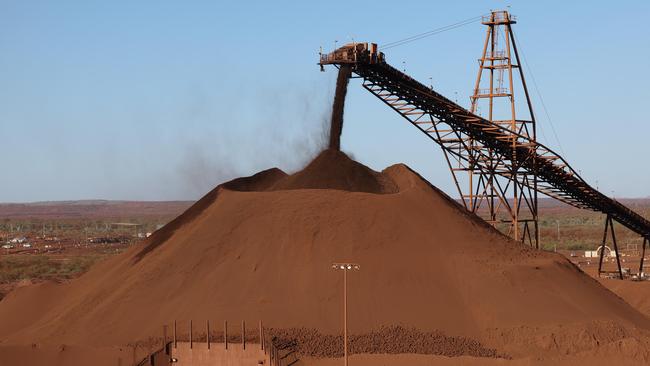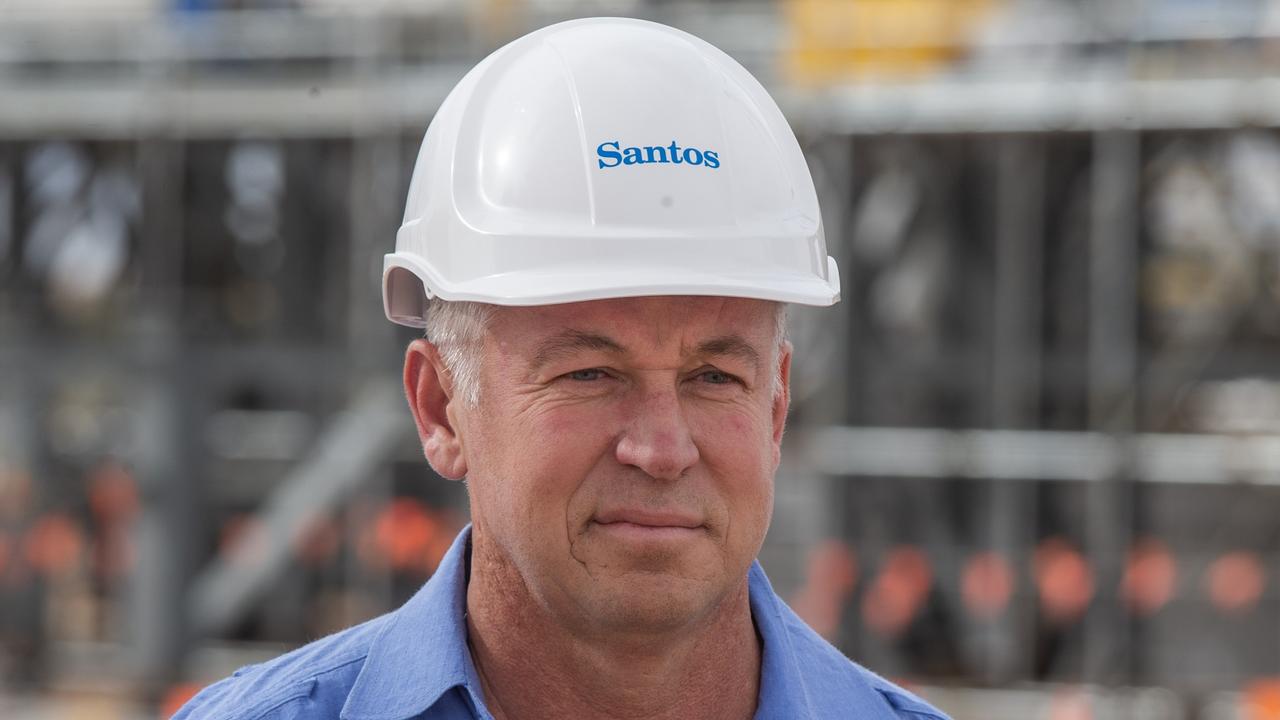Commodities trim the ASX 200’s rise but ANZ says supplies are tightening
Tightening supplies of raw materials may magnify a rise in prices if China’s stimulus measures manage to lift growth in the world’s No.2 economy and biggest consumer of most commodities.

Business
Don't miss out on the headlines from Business. Followed categories will be added to My News.
Disappointment with China’s latest economic stimulus plans weighed on industrial commodities this week with iron ore, crude oil and base metals coming off after recent gains fuelled by hints of large-scale fiscal stimulus by the world’s biggest consumer of most commodities.
While Chinese officials continue to indicate that they will do more to support their economy, a press conference on fiscal policy last weekend and another briefing on policies to address the nation’s property market crisis on Thursday failed to move the dial.
Spot gold soared above $US2700 per ounce due to heightened geopolitical risk and expectations of sustained buying from central banks and exchange traded funds, but iron ore hit three-week lows under $US99 a tonne and were down about 6 per cent for the week.
It was a similar story for oil prices and base metals with Brent crude oil down about 6 per cent and the London Metals Exchange index down about 3 per cent for the week led by copper.
“Metal markets have faced a multitude of issues this year, and this has sent prices on a rollercoaster ride,” ANZ senior commodity strategist Daniel Hynes said.
“The year started strongly with rising supply-side issues triggering a broad rally across the complex.
“However, it has been overwhelmed by concerns over a weak economic backdrop.”
Together with uncomfortably strong employment data which dialled back hopes of interest rate cuts, weakening commodity prices took the shine off the Australian sharemarket.
After soaring to a record high of 8394.5 as the US also hit records on a positive start to reporting season, the ASX 200 index had its worst day in six weeks on Friday.
The index closed on Friday at 8283.2 points, up 0.8 per cent for the week but 1.2 per cent off the all-time high that it reached on Thursday.
Banks outperformed on a “high-for-longer” interest rate outlook.
However, the materials and energy sectors were key drags on the local sharemarket.
Still, ANZ saw “signs of tightness” emerging in base metals markets which may offset the recent disappointment over the lack of big bang stimulus plans from China or potentially magnify a strong rebound if a large stimulus is announced at the end of this month as some expect.
“Cases of unplanned disruptions and supply outages that increase the risk of weaker than expected supplies have the potential to push prices high,” Mr Hynes said.
“This is raising the risk of a weaker-than-expected supply of refined metals.”
It came as wild electrical storms put BHP’s Olympic Dam copper mine in South Australia’s far north out of action on Thursday and the company scrambled to assess the damage and how long it would take to restart operations.
The storms, which lashed northern SA with strong winds and thousands of lightning strikes, damaged transmission towers carrying power to Olympic Dam and the rest of the region.
BHP said transmission lines supplying Olympic Dam and the town of Roxby Downs, where most of its workforce is based, had been structurally damaged.
It was unclear how long it would take to resume work at Olympic Dam, which has operated relatively trouble free since storms in 2016 that caused a 15-day shutdown.
The 2016 outage cost BHP about $137m and led to fierce debate about reliance on renewable energy in the state.
ANZ noted that many copper miners have already downgraded their production estimates this year amid rising levels of unplanned disruptions. Supply disruptions are also rising in the bauxite market and impacting alumina output. Meanwhile the price-led closures and disruptions that caused a 1.5 per cent drop in 2023 mined zinc supply appear to be continuing into 2024.
Most disruptions identified so far this year are associated with concentrate operations, and disruption rates are currently tracking at 3.6 per cent of concentrate production.
Almost 60 per cent of total mine disruptions are at assets in Latin America.
Suspension of the Cobre Panamá mine removed 350,000 tonnes of output, and Anglo American reported sharp falls in production from its Los Bronces and El Soldado mines in the June quarter.
Production at Codelco, the world’s largest copper producer, plunged to 1.325 million tonnes in 2023 from 1.618 million tonnes in 2021, the lowest level in 25 years.
After a 13 per cent surge in Peruvian production in 2023, output over the first seven months of 2024 fell 1.2 versus the same period in 2023.
There has also been an increase in disruptions at African operations, which currently account for 18 per cent of total disruptions.
“This is being exacerbated by China’s incessant increase in refining capacity, creating tightness in concentrate markets and causing treatment charges to fall sharply in recent months,” Mr Hynes said.
The lack of growth in mine supply in coming years won’t be helped by a lack of growth in copper resources. A fall in drilling activity has seen total copper resources fall 42 per cent to a four-year low of 7.6 million tonnes in 2023.
“Low copper prices through 2022-23 appear to have impacted funds raised by junior mining companies and explorers, leading to the decline in activity,” he said.
“While this may not impact the market in the short term, it could have a big impact later this decade as demand ramps up amid the increased needs of the energy transition.”
Overall, he expects the tightness in raw material markets to have limited impact on the supply of refined metals in the short term as inventories across the supply chain should mitigate the impact.
But that could change quickly if China’s recent stimulus measures have their desired effect on economic growth, boosting demand for refined metals such as copper, zinc and aluminium.
Originally published as Commodities trim the ASX 200’s rise but ANZ says supplies are tightening



